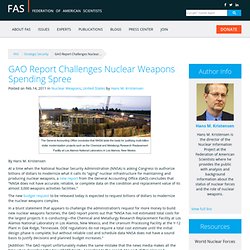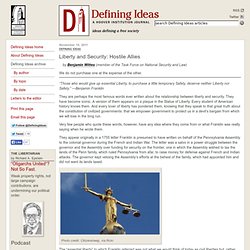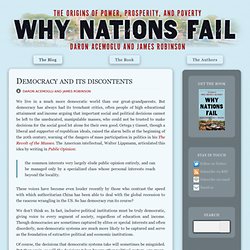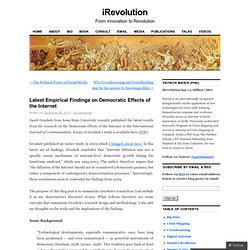

Democratic theory. Peace Policy. Multinational Analysis ofDemocratic Forecasts and Internet Diffusion. Nuclear Threat Initiative: Home Page. Nuclear.Ru. Home-Eng. Nuclear Resources. Nuclear Posture Review. Democracy Digest. The Nuclear Weapons Modernization Budget » FAS Strategic Security Blog. GAO Report Challenges Nuclear Weapons Spending Spree » FAS Strategic Security Blog. .

By Hans M. Kristensen At a time when the National Nuclear Security Administration (NNSA) is asking Congress to authorize billions of dollars to modernize what it calls its “aging” nuclear infrastructure for maintaining and producing nuclear weapons, a new report from the General Accounting Office (GAO) concludes that “NNSA does not have accurate, reliable, or complete data on the condition and replacement value of its almost 3,000 weapons activities facilities.” The Nuclear Weapons Budget. I believe that US nuclear forces, policies and posture are mis-aligned with today’s security environment.

Vulnerable at 2,672 Nuclear Warheads? In a recent article, Jeffrey Lewis of Arms Control Wonk outlined what could happen to U.S. nuclear forces under a sequestration budget.

He illustrates that even with Secretary of Defense Leon Panetta’s so-called “doomsday” cuts to nuclear weapons related activities, the U.S. could still field enough warheads to greatly surpass the limits put in place by New START. What could that “doomsday” look like if the U.S. maximized its nuclear forces? (View at full size) Lewis is careful to note that these cuts are what could happen and not necessarily what will happen. Likewise, he posits a nuclear force that we could have under the deepest cuts. 12/06/11 UPDATE: A reader correctly noted that sequestration cuts in total dollars did not match Jeffery Lewis' article. 12/06/11 UPDATE: To avoid any confusion, we have removed the total dollar figure from the post. Sources: Jeffrey Lewis and Hans Kristensen. Liberty and Security: Hostile Allies. We do not purchase one at the expense of the other.

“Those who would give up essential Liberty, to purchase a little temporary Safety, deserve neither Liberty nor Safety.” —Benjamin Franklin They are perhaps the most famous words ever written about the relationship between liberty and security. They have become iconic. A version of them appears on a plaque in the Statue of Liberty. Very few people who quote these words, however, have any idea where they come from or what Franklin was really saying when he wrote them. They appear originally in a 1755 letter Franklin is presumed to have written on behalf of the Pennsylvania Assembly to the colonial governor during the French and Indian War. Photo credit: Citizensheep, via flickr. Ballistic Missile Defense Review. Democracy and its discontents. We live in a much more democratic world than our great-grandparents.

But democracy has always had its trenchant critics, often people of high educational attainment and income arguing that important social and political decisions cannot be left to the uneducated, manipulable masses, who could not be trusted to make decisions for the social good let alone for their own good. Ortega y Gasset, though a liberal and supporter of republican ideals, raised the alarm bells at the beginning of the 20th century, warning of the dangers of mass participation in politics in his The Revolt of the Masses. The American intellectual, Walter Lippmann, articulated this idea by writing in Public Opinion: the common interests very largely elude public opinion entirely, and can be managed only by a specialized class whose personal interests reach beyond the locality.
We don’t think so. Welcome to SIPRI — www.sipri.org - Firefox. World Nuclear News. Unaccountable: Exploring the Lack of Budgetary Transparency for U.S. Nuclear Security Spending. With U.S. federal government spending, including defense spending, now expected to decline sharply over the next decade—even as the Obama administration has pledged to invest more than $210 billion to upgrade the U.S. nuclear arsenal and its supporting infrastructure—it becomes increasingly important to know where nuclear security dollars—money spent on nuclear weapons and weapons-related programs (such as cooperative threat reduction)—are going on both an annual and a cumulative basis. [1] Yet today, as has been the case for more than six decades, no one in the federal government has any clear idea how much is being spent on nuclear weapons and weapons-related programs.
This is especially true for programs managed by the Department of Defense (DOD), where most nuclear security dollars are spent. This situation exists because there is no comprehensive budget or budgetary line item that tracks all these programs and costs within and across government organizations and over time. James Martin Center for Nonproliferation Studies (CNS) Latest Empirical Findings on Democratic Effects of the Internet. Jacob Groshek from Iowa State University recently published the latest results from his research on the democratic effects of the Internet in the International Journal of Communication.

A copy of Groshek’s study is available here (PDF). Groshek published an earlier study in 2009 which I blogged about here. In this latest set of findings, Groshek concludes that “Internet diffusion was not a specific causal mechanism of national-level democratic growth during the timeframe analyzed,” which was 1994-2003. The author therefore argues that “the diffusion of the Internet should not be considered a democratic panacea, but rather a component of contemporary democratization processes.”
Interestingly, these conclusions seem to contradict his findings from 2009. The purpose of this blog post is to summarize Groshek’s research so I can include it in my dissertation’s literature review.